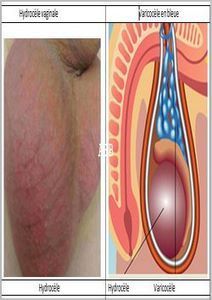
217- Hydrocele Defintion Causes How to Shrink Hydrocele Naturally
How to Shrink Hydrocele Naturally? Plants to Reduce Hydrocele Naturally. If you suffer hydrocele, we have a new natural treatment for you. Indeed, our natural treatment for hydrocele, is the best for you. Don’t worry to order it
Click HERE to join us to know How to Shrink Hydrocele Naturally
What is Hydrocele? Overview of Hydrocele
A hydrocele (HI-droe-seel) is a type of swelling in the scrotum that occurs when fluid collects in the thin sheath surrounding a testicle. Hydrocele is common in newborns and usually disappears without treatment by age 1. Older boys and adult men can develop a hydrocele due to inflammation or injury within the scrotum.
A hydrocele usually isn’t painful or harmful and might not need any treatment. But if you have scrotal swelling, see your doctor to rule out other causes.
If you suffer of hydrocele Please to Join us
Hydrocele: Definition How to Shrink Hydrocele Naturally
Hydrocele is a benign accumulation of fluid encapsulated in the bursa or along the spermatic cord. It manifests as a painless swelling, with skin that is both tight and elastic. Hydrocele can be congenital or caused by certain events, such as inflammation, surgery, or an accident. Depending on the age and symptoms, hydrocele may go away on its own. Otherwise, surgery is necessary.
How to Shrink Hydrocele Naturally? Please to Join us
Synonyms hydrocele
- water effusion,
- testicular hydrocele
- water accumulation,
- vaginal hydrocel
How to Shrink Hydrocele Naturally? Please to Join us
Symptoms Hydrocele and How to Shrink Hydrocele Naturally
Usually, the only indication of a hydrocele is a painless swelling of one or both testicles. Adult men with a hydrocele might experience discomfort from the heaviness of a swollen scrotum. Pain generally increases with the size of the inflammation. Sometimes, the swollen area might be smaller in the morning and larger later in the day.
- Painless swelling,
- skin both tight and elastic
- Location: groin,
- spermatic cord or bursa Increase in volume and a feeling of heaviness
- On one side or both sides
Please to Join us to know How to treat hydrocele Naturally
Causes Of Hydrocele and How to Shrink Hydrocele Naturally
Primary hydrocele
Congenital origin (embryonic period)
Secondary hydrocele
Consequence of inflammation Consequence of injury, p. ex. contusion of the testicles Consequence of an inguinal hernia
NB: How to Shrink Hydrocele Naturally: We have the only one natural remedy to reduce hydrocele naturally
Risk factors Hydrocele
Most hydroceles are present at birth. At least 5 percent of newborn boys have a hydrocele. Babies who are born prematurely have a higher risk of having a hydrocele.
Risk factors for developing a hydrocele later in life include:
- Injury or inflammation to the scrotum
- Infection, including a sexually transmitted infection (STI)
Complications Hydrocele
A hydrocele typically isn’t dangerous and usually doesn’t affect fertility. But a hydrocele might be associated with an underlying testicular condition that can cause serious complications, including:
- Infection or tumor. Either might reduce sperm production or function.
- Inguinal hernia. The loop of intestine trapped in the abdominal wall can lead to life-threatening complications
When to see a doctor for Hydrocele?
See your doctor if you or your child experiences scrotal swelling. It’s important to rule out other causes of the swelling that might require treatment. For example, a hydrocele might be associated with a weak point in the abdominal wall that allows a loop of intestine to extend into the scrotum (inguinal hernia).
A baby’s hydrocele typically disappears on its own. But if your baby’s hydrocele doesn’t disappear after a year or if it enlarges, ask your child’s doctor to examine the hydrocele again.
Get immediate medical treatment if you or your child develops sudden, severe scrotal pain or swelling, especially within several hours of an injury to the scrotum. These signs and symptoms can occur with a number of conditions, including blocked blood flow in a twisted testicle (testicular torsion). Testicular torsion must be treated within hours of the beginning of signs and symptoms to save the testicle
Treatment
In baby boys, a hydrocele sometimes disappears on its own. But for males of any age, it’s important for a doctor to evaluate a hydrocele because it can be associated with an underlying testicular condition.
A hydrocele that doesn’t disappear on its own might need to be surgically removed, typically as an outpatient procedure. The surgery to remove a hydrocele (hydrocelectomy) can be done under general or regional anesthesia. An incision is made in the scrotum or lower abdomen to remove the hydrocele. If a hydrocele is found during surgery to repair an inguinal hernia, the surgeon might remove the hydrocele even if it’s causing no discomfort.
After hydrocelectomy, you might need a tube to drain fluid and a bulky dressing for a few days. Your doctor is likely to recommend a follow-up exam because a hydrocele might recur.
